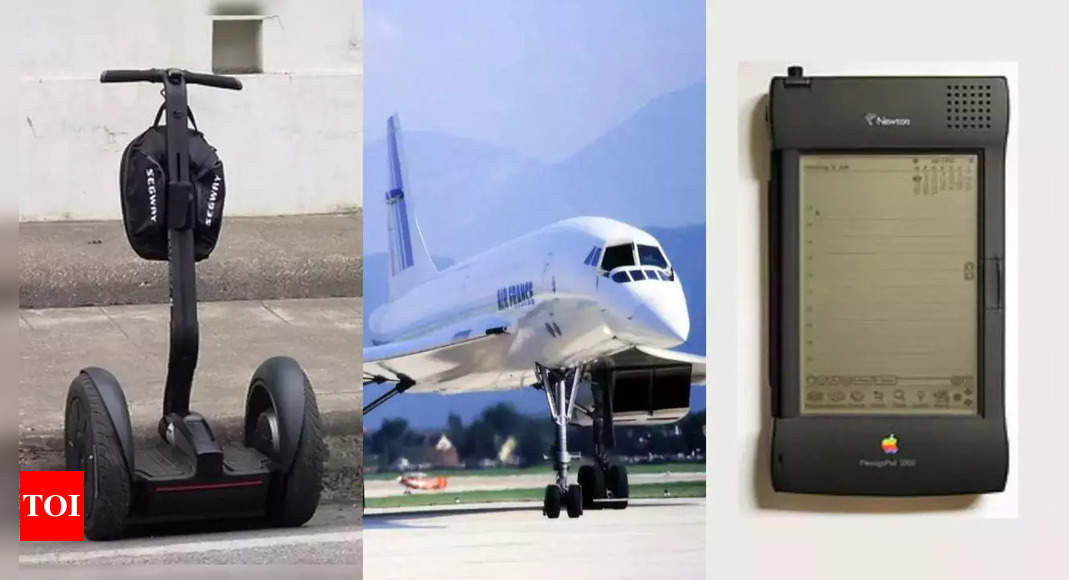These inventions often struggle due to various factors such as timing, market reception, or practical limitations.While they may have sparked interest and even excitement, they ultimately became footnotes in the history of innovation. In this article, we explore ten such inventions that, despite their potential, didn’t change the world as anticipated.
Failed inventions that didn’t last
Segway
When the Segway was unveiled in 2001, it was touted as a revolutionary mode of personal transportation that would change the way cities were designed and how people got around. However, the self-balancing scooter never gained the widespread adoption its creators hoped for. High costs, regulatory issues, and the fact that it didn’t solve a pressing transportation need led to its marginalisation.
Google Glass
Google Glass was an ambitious attempt to bring augmented reality to the masses. Released in 2013, these smart glasses allowed users to take photos, access the internet, and receive notifications directly in their line of sight. However, privacy concerns, a high price tag, and the awkward social implications of wearing the device in public led to its commercial failure.
LaserDisc
Before DVDs became the standard for home video, there was the LaserDisc. Introduced in the late 1970s, LaserDiscs offered superior video and audio quality compared to VHS tapes. Despite this, they were expensive, cumbersome, and required specialised equipment. The format never gained widespread popularity and was quickly overshadowed by more convenient alternatives like DVDs.
Betamax
Betamax, developed by Sony in the mid-1970s, was one of the first formats for home video recording. It offered better video quality than its competitor, VHS. However, VHS tapes were longer and cheaper, leading to Betamax’s defeat in the format war. Despite its technical superiority, Betamax became a niche product before eventually fading out entirely.
Apple Newton
Long before the iPhone revolutionised the smartphone market, Apple introduced the Newton, a personal digital assistant (PDA) in 1993. The device featured handwriting recognition, which was revolutionary at the time. However, it was expensive, bulky, and the handwriting recognition was far from perfect. The Newton failed to capture the consumer market and was discontinued in 1998.
Hoverboard
Hoverboards, the two-wheeled, self-balancing scooters, became a craze around 2015. While they were initially popular, issues with safety, including reports of batteries catching fire, along with unclear regulations, led to a sharp decline in their popularity. Today, they are more of a novelty item than a transformative mode of transportation.
Microsoft Zune
In an attempt to rival Apple’s iPod, Microsoft launched the Zune in 2006. Despite some innovative features, the Zune failed to capture significant market share. It struggled due to poor marketing, limited content availability, and the dominance of the iPod, eventually leading Microsoft to discontinue the product line in 2011.
Concorde
The Concorde was a marvel of engineering, capable of flying at twice the speed of sound and cutting transatlantic flight times in half. Despite its technological achievements, the supersonic passenger jet was incredibly expensive to operate, had limited seating, and faced environmental concerns due to its high fuel consumption and noise levels. The Concorde was retired in 2003, leaving no successor in commercial aviation.
Segway Centaur
The Segway Centaur was an off-road, four-wheeled concept vehicle unveiled in 2003. It combined the balance technology of the original Segway with an ATV-like design. Although it generated some excitement, it never made it to mass production. The Centaur was a niche product that didn’t offer a clear advantage over existing off-road vehicles.
Nintendo Virtual Boy
Released in 1995, the Virtual Boy was Nintendo’s attempt to bring 3D gaming to the market. The console promised an immersive gaming experience but failed to deliver. The graphics were rudimentary, the console was uncomfortable to use for extended periods, and the monochrome display caused headaches for many users. The Virtual Boy was a commercial failure and was discontinued within a year.
Also read: 11 best accidental inventions of all time: What, why and how explained


